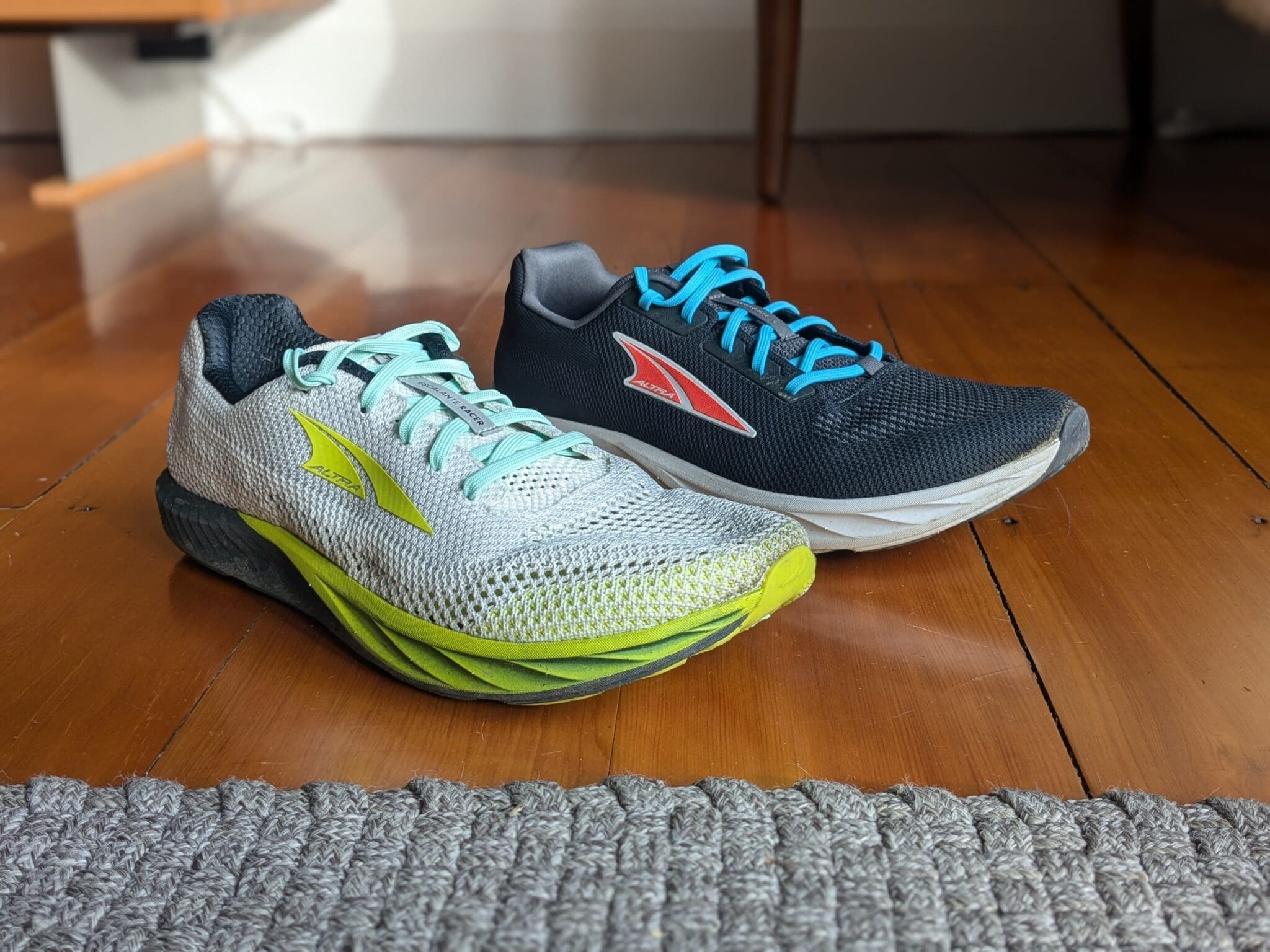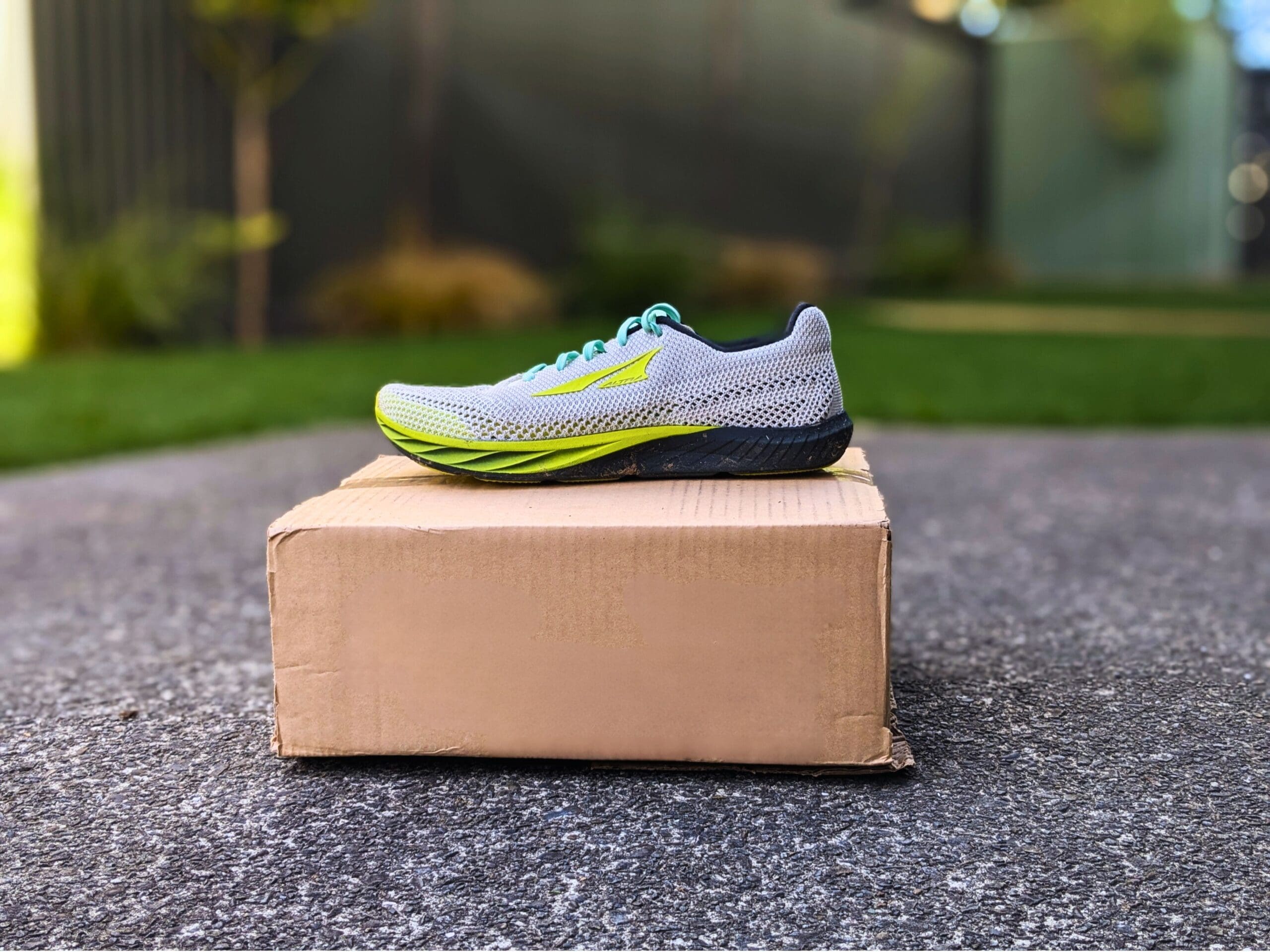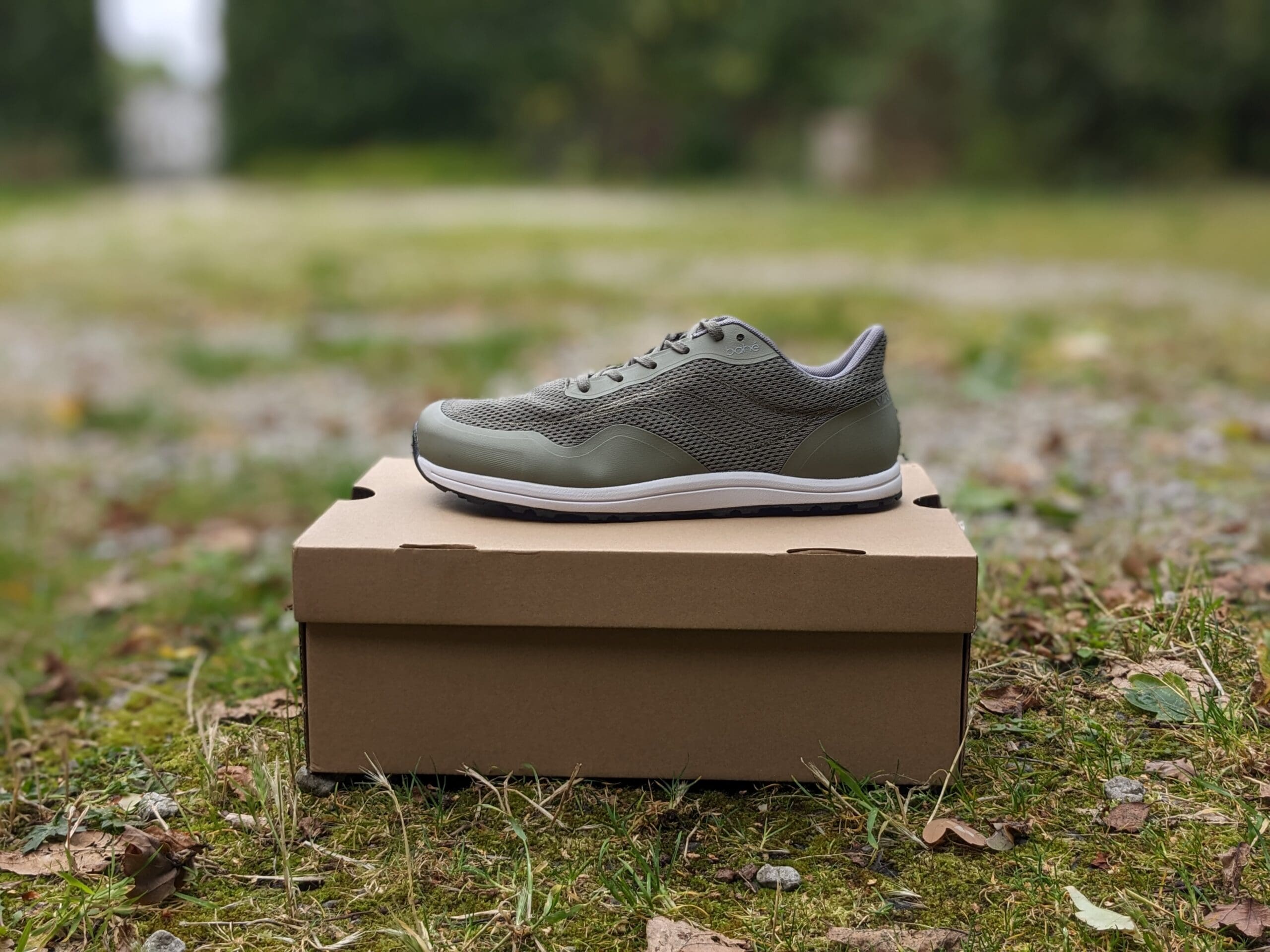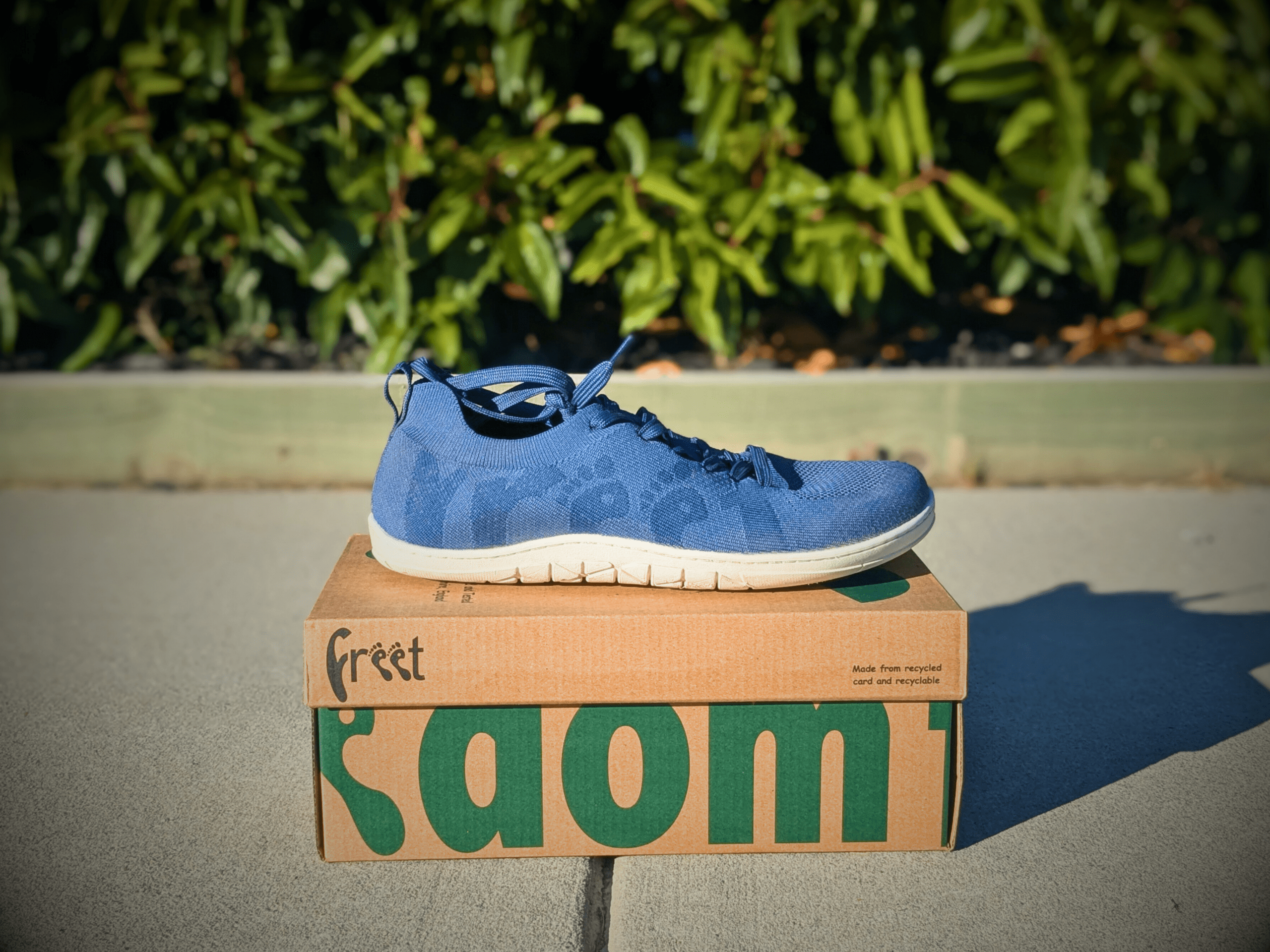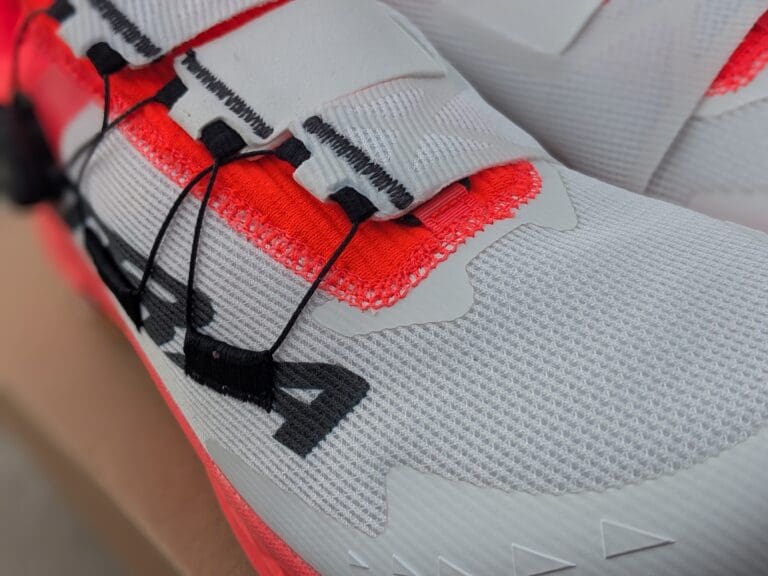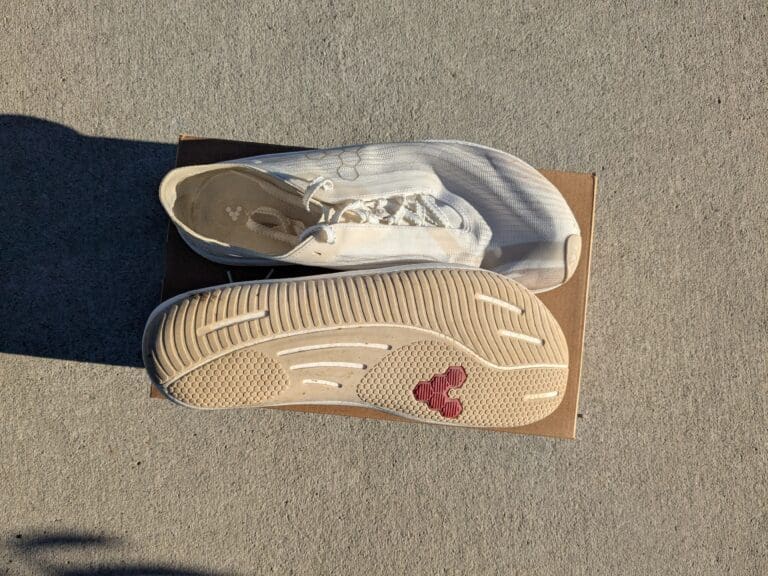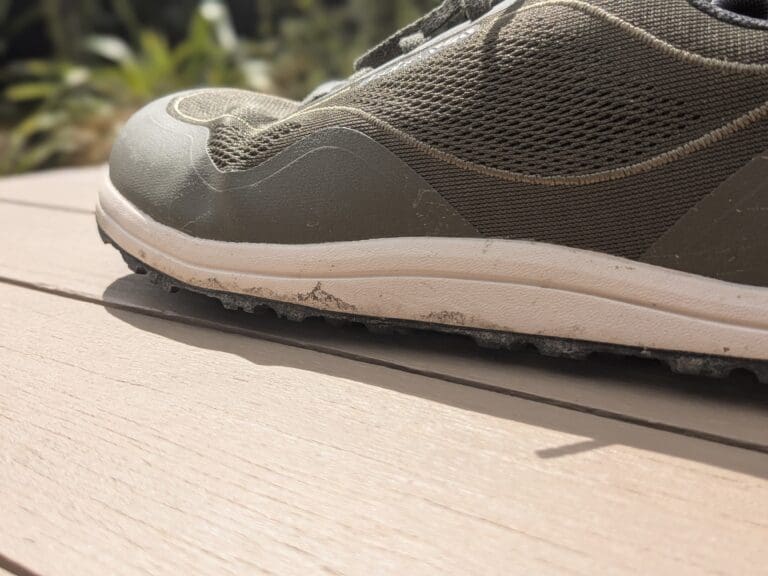Want the benefits of barefoot running but worried about diving in too quickly?
There are several effective ways to transition to barefoot running. Bridge shoes are one proven approach, but they’re not the only path. The runners who successfully adapt to barefoot running take a gradual approach—whether that’s through bridge shoes or by going barefoot itself very slowly over time.
Bridge shoes occupy that middle ground between conventional trainers and true barefoot shoes. They feature zero drop and foot-shaped toe boxes like minimalist footwear, but they maintain enough cushioning to protect your feet and legs while they’re adapting to natural movement patterns. Think of them as training wheels that actually teach you proper balance rather than just preventing falls.
I’ve tested many of the major bridge shoes on the market while coaching dozens of runners through their transitions. This guide covers the four best options—the ones that consistently deliver safe, successful transitions across different runner types and experience levels.
Affiliate Disclosure: By clicking through the links on this page and purchasing the products, you’ll be helping me out. This is done because I receive a kickback from the sellers at no extra cost to you! Thank you so much for supporting us!
Most runners get confused about bridge shoes, minimalist shoes, and barefoot shoes because they sit on the same spectrum. They look similar but serve completely different purposes.
Traditional running shoes like the Brooks Ghost or Nike Pegasus typically feature:
- Stack heights of 25-40mm
- Heel-to-toe drops of 4-12mm
- Narrow, pointed toe boxes
- Rigid construction with heavy arch support
- Thick, cushioned midsoles designed to “protect” your feet from impact
Barefoot shoes like the Xero Prio or Vivobarefoot Primus sit at the opposite end:
- Stack heights of 3-8mm
- Zero drop (flat from heel to toe)
- Wide, foot-shaped toe boxes
- Extremely flexible construction
- Minimal cushioning that lets you feel every texture underfoot
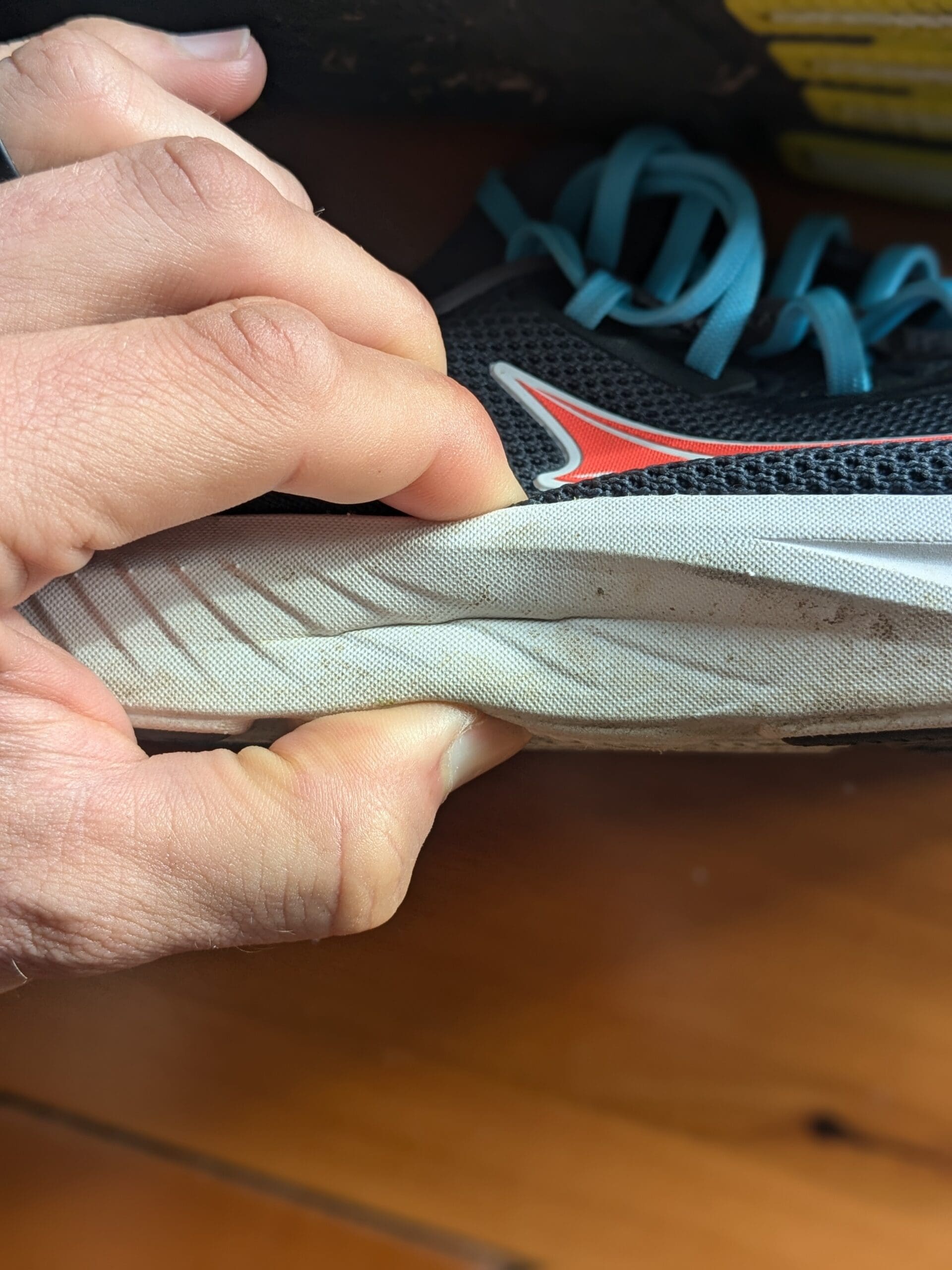
Bridge shoes occupy that sweet spot between conventional trainers and true barefoot shoes. They combine the foundational elements of barefoot design—zero drop and anatomical toe boxes—with moderate cushioning that protects your feet during the adaptation period. Stack heights typically range from 15-25mm, which sounds high compared to barefoot shoes, but represents a significant reduction from conventional footwear.
Bridge shoes teach natural movement patterns without overwhelming your body. The zero-drop platform begins retraining your gait, encouraging midfoot or forefoot landing instead of heavy heel striking. The foot-shaped toe box allows your toes to spread naturally and engage stabilizing muscles. But the moderate cushioning prevents the calf strain, Achilles stress, and metatarsal overload that often derail runners who transition too aggressively.
/qui
I learned this the hard way back in 2014. I jumped from traditional running shoes straight to New Balance Minimus shoes. Within two weeks, my calves were constantly sore, my Achilles tendons felt tight and vulnerable, and I had to drastically cut my running volume. It took years to learn from my mistakes, but now I can run any distance I want in minimal shoes.
After extensive testing across different terrains, distances, and runner types, these three shoes consistently deliver the best results for runners transitioning toward barefoot running:
The Safe Entry Point
Altra Escalante Racer 2
Type: Road
Width: Wide
Stack height: 22mm
Weight: 7.5oz / 213g
A well-cushioned bridge shoe with zero-drop platform that provides substantial protection while encouraging natural gait patterns, making it ideal for runners new to barefoot running. Read the full Review
This is the bridge shoe I recommend most often to runners making their first move toward barefoot running. At 22mm of stack height, it provides substantial cushioning that feels protective and familiar. But the zero-drop platform immediately begins reshaping your gait patterns. It’s the perfect combination of comfort and education.
What sets it apart?
The Escalante Racer 2 stands out from other Altra models because of its exceptional balance between protection and ground connection. The cushioning is firmer than the standard Escalante 4, which means you get better road feel and more efficient energy transfer without sacrificing impact absorption. I’ve run everything from easy recovery jogs to 20-mile long runs in these shoes, and felt comfortable throughout.
How’s the toe box?
Altra’s FootShape toe box design is where this shoe really shines as a bridge option. It provides genuine room for natural toe splay—I can spread my toes completely during ground contact—without the boat-like appearance that makes some runners self-conscious about wider barefoot shoes. The toe box is anatomical enough to strengthen foot muscles but subtle enough that most people won’t give you strange looks.
What about durability?
Altra shoes aren’t known for their longevity, but the latest Escalantes are one exception that’s getting really positive feedback. I’m at 485 miles on my primary test pair, and while the outsole shows wear patterns in high-friction zones, the midsole compression remains minimal. The foam hasn’t lost its responsiveness the way many cushioned shoes do after 300 miles. Several runners I’ve coached have also reported good durability, which is unusual for Altra shoes.
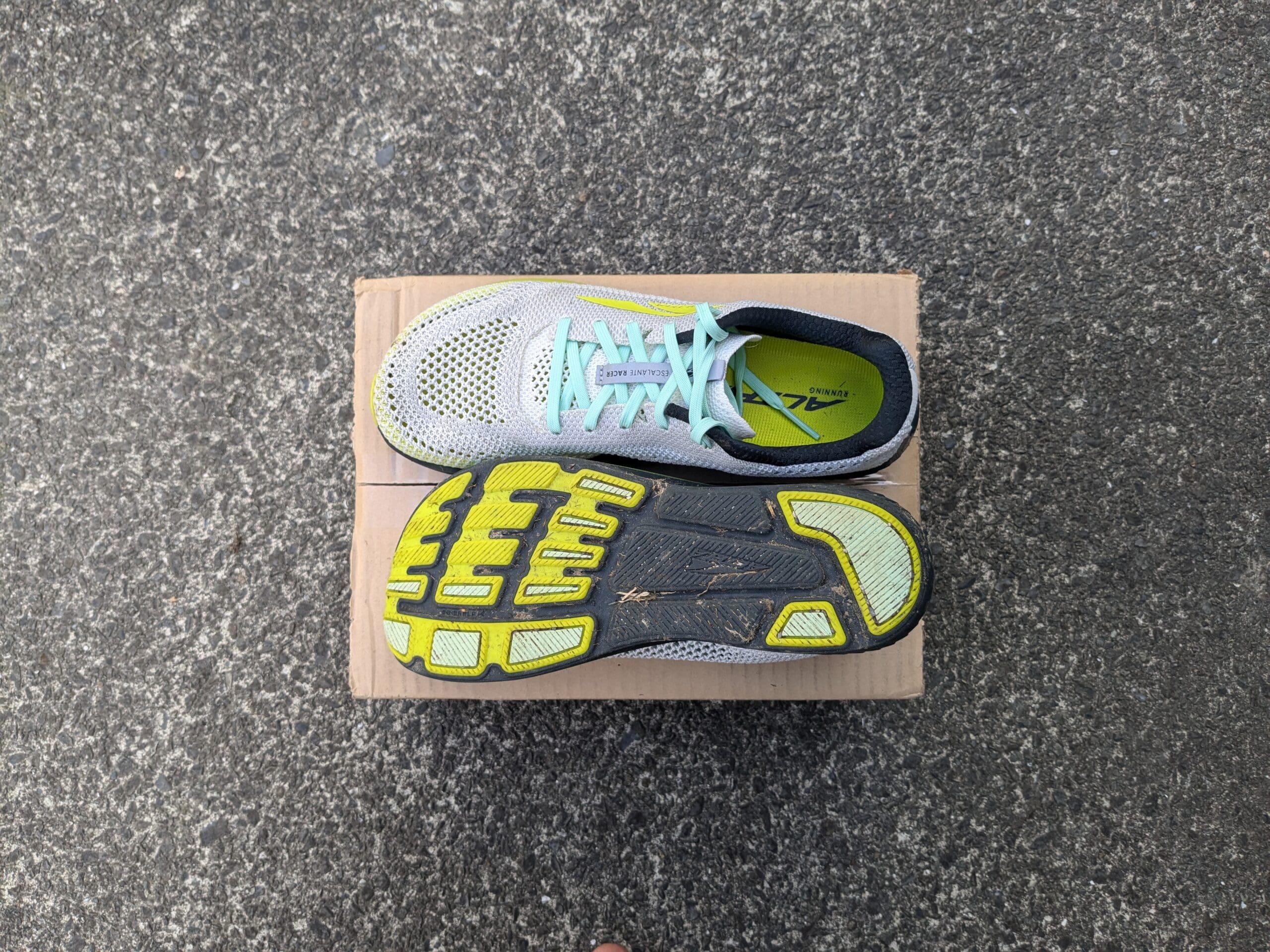
Sizing
Sizing runs true to Altra standards. If you’re currently wearing Altras, stick with your normal size. Coming from narrow traditional shoes like Nike? Your standard size should work well. The generous toe box accommodates foot swelling during long runs without requiring extra length.
How does it perform during transition?
One of the Escalante Racer 2’s best qualities is how well it maintains training volume during transition. Unlike ultra-minimal shoes that often force runners to cut their mileage significantly, most people can maintain their training schedule. That said, as with any shoe transition, I’d still advise you to rotate them into your shoe usage slowly. You’ll feel your calves working in new ways, and some stabilizing muscles will make themselves known, but it’s educational fatigue rather than debilitating soreness.
This is the bridge shoe for runners who value safety and gradual adaptation. If you’re nervous about barefoot running but curious about its benefits, start here. The Escalante Racer 2 provides enough protection to feel confident during the transition while delivering the foundational elements—zero drop and natural toe splay—that make barefoot running beneficial.
Cushioned with Ground Feel
Bahe Revive Endurance
Type: Road
Width: Extra Wide
Stack height: 22mm
Weight: 10.9oz / 309g
Features exceptional ground feel combined with 22mm of firm, resilient cushioning and an extremely wide toe box, perfect for runners transitioning from heavily cushioned shoes. Read the full Review
The Bahe Revive Endurance proves that substantial cushioning and excellent ground feel aren’t mutually exclusive. At 22mm of stack height, it’s well cushioned, yet it delivers remarkable flexibility and road connection that rivals shoes half its thickness.
How’s the cushioning?
Bahe’s approach to cushioning is fundamentally different from traditional running shoes. Instead of using soft, squishy foam that isolates your feet from the ground, the Revive uses a firmer, denser midsole compound that provides protection through resilience rather than absorption.
You can sense surface texture changes, detect minor terrain variations, and adjust your stride accordingly—all while maintaining real protection for extended efforts. This is crucial during the transition phase when you’re relearning how to run naturally.
How’s the toe box?
If you’ve struggled with narrow toe boxes from Xero, Vivobarefoot, or Altra, the Revive Endurance is worth considering. It’s extremely wide and squared off, with width extending through the entire midfoot. The shoe accommodates my moderately wide feet with a narrow heel perfectly.
Long-distance comfort?
The firm, thin midsole foam sits at the sweet spot between cushion and ground feel. It doesn’t pack out like softer foams after hours of running. The TPU and mesh upper provides flexibility for roads and moderate dry trails, though the small lugs aren’t designed for muddy or technical terrain.
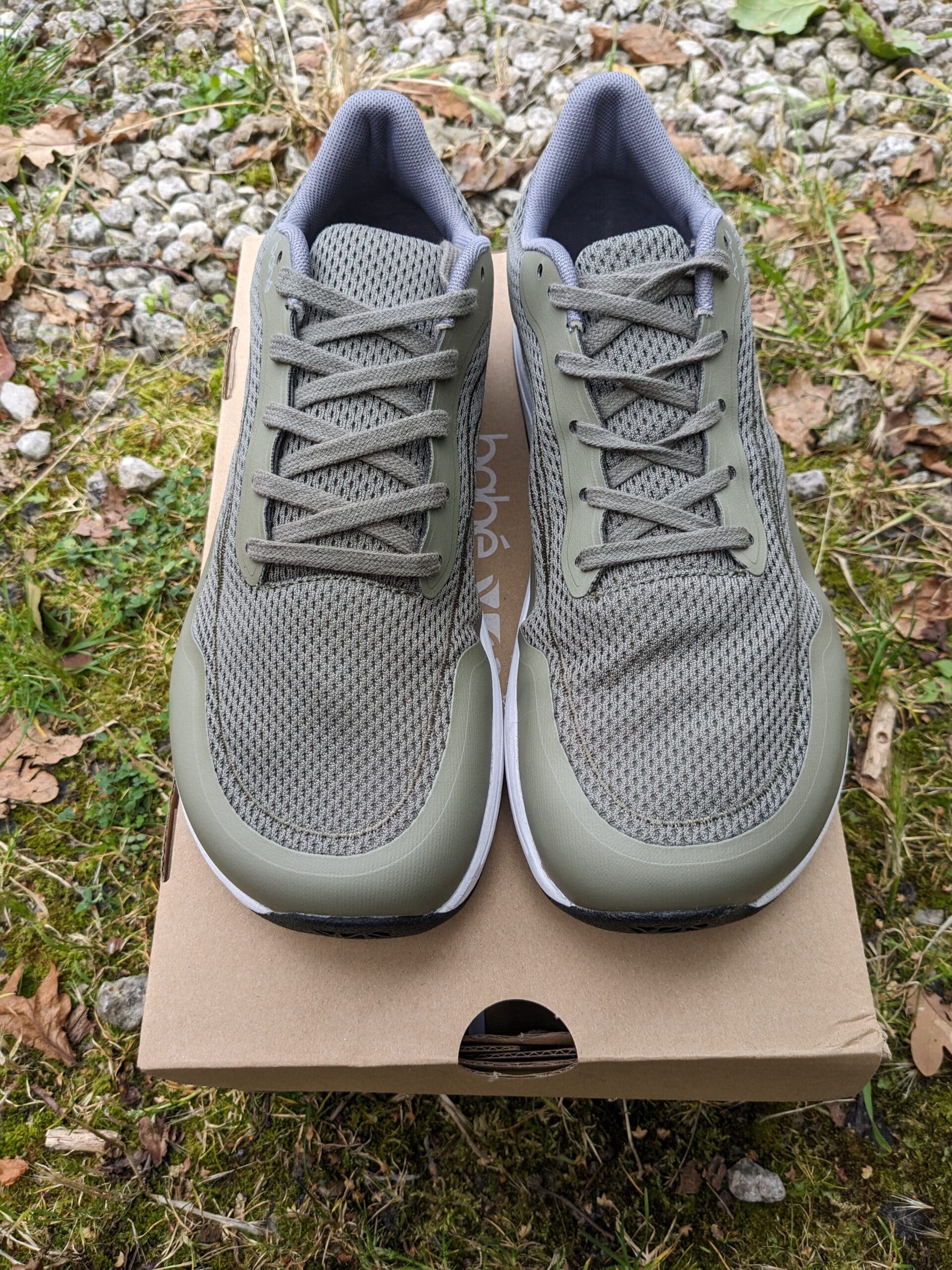
Sizing
Size down half a size from your normal size. The shoe runs long and deep. Bahe offers excellent printable size guides on their website to verify sizing before ordering.
If you’re coming from highly cushioned shoes like the Hoka Bondi or Nike Invincible, or if you’re a heavier runner concerned about impact stress, the Revive provides the cushioning you need while introducing barefoot principles gradually. It’s proof that you can maintain substantial protection while still training your feet to function more naturally.
The Low Stack Option
Freet Skeeby
Type: Road
Width: Wide
Stack height: 10.5mm
Weight: 9.2oz / 261g
A low-stack bridge shoe with responsive cushioning and exceptional flexibility, ideal for runners ready to progress beyond traditional bridge shoes after 2-3 months of adaptation. Read the full Review
The Freet Skeeby is a low stack option that’s not for everyone—but the responsive cushioning makes it feel more forgiving than you’d expect. At 10.5mm of stack height with a 4mm rebound insole, it strikes a balance between minimal and cushioned. The key advantage is the flexibility: it really challenges your foot to work and adapt, which is exactly what you want for retraining. That said, you’ll need to transition slowly into these.
What about ground feel?
The Skeeby delivers flexibility combined with that softer underfoot feel from the rebound insole. Despite the low stack, the responsive midsole compound doesn’t feel harsh. You get genuine feedback about ground conditions without your feet taking a pounding.
You can sense surface texture changes and adjust your stride accordingly, but the cushioning softens the impact just enough to keep things manageable during the learning phase. For runners doing tempo efforts or interval work, this balance is valuable.
How’s the zero-drop platform?
Your heel and forefoot sit completely level with the zero-drop platform, which encourages natural midfoot or forefoot landing patterns without forcing them. I’ve run everything from hill sprints to threshold tempo runs in the Skeeby, and the geometry consistently rewards efficient movement. Heavy heel striking feels awkward and inefficient—which is exactly the point.
How versatile is it?
Where the Skeeby particularly excels is versatility from running to casual. I’ve used these shoes for plenty of run and while it’s not be best runner in the Freet lineup, it’s comfortable nature means you can wear this as an everyday option too! Few bridge shoes manage this range successfully.
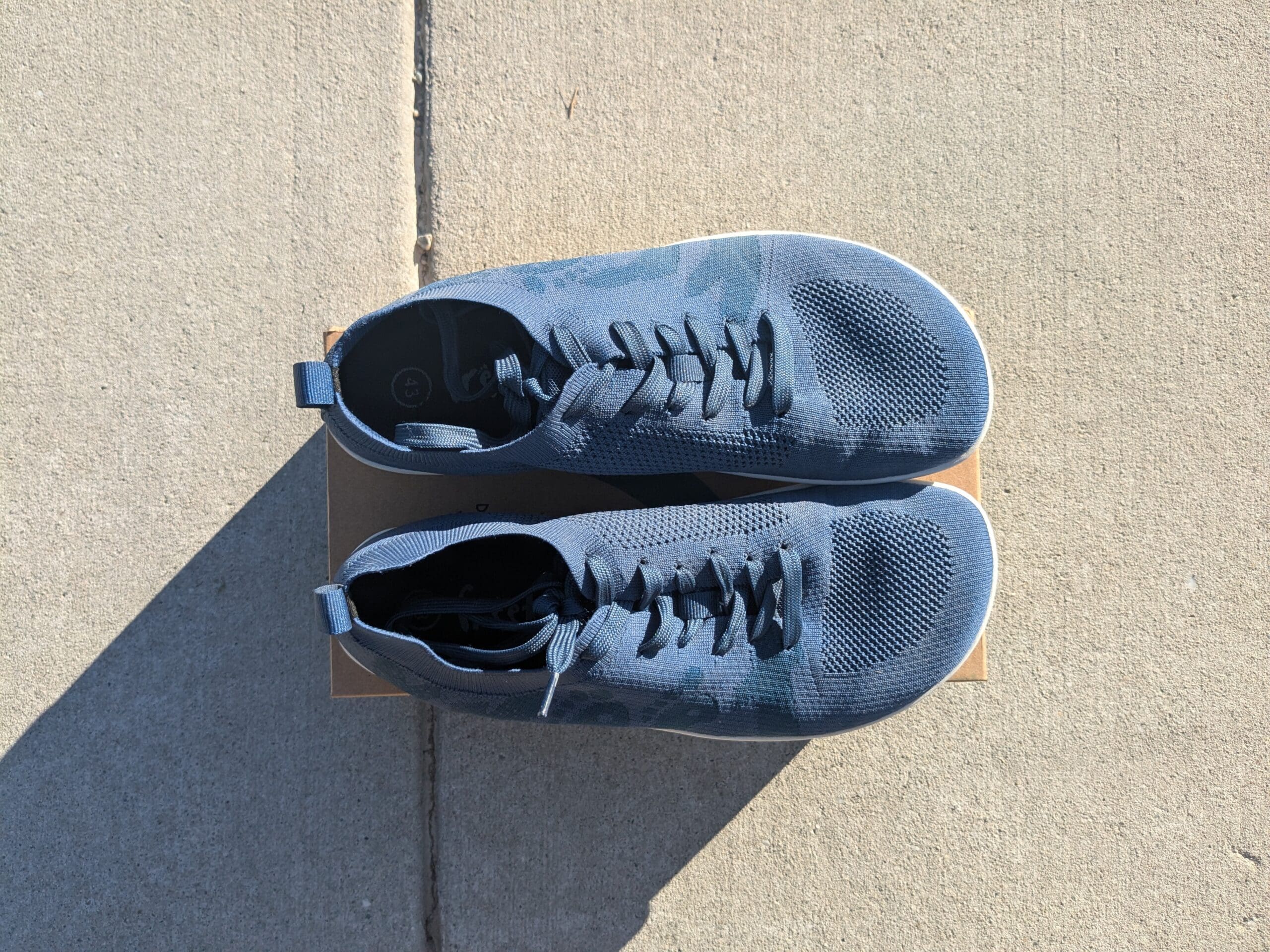
Sizing
Sizing runs true to EU standards, but US conversions differ. If you rely on US sizing, consult Freet’s size guide carefully. Consider sizing down if between sizes for a more secure fit. The knit upper flexes around your foot, so a snug midfoot fit is important. Note that the heel is soft and unstructured—tight lacing is essential to avoid slipping during faster efforts. The exceptionally wide toe box accommodates broad feet perfectly, though those with shallower feet may struggle to achieve a snug fit.
The Skeeby is for runners ready to go lower in stack height. At 10.5mm, it’s a significant step down from traditional bridge shoes (22mm), and you need to respect that transition. The flexibility will push your feet and calves to work harder, which is exactly the point—but this isn’t a shoe to jump into casually. If you’re still early in your transition, stick with the Altra or Bahe Revive first.
That said, if you’ve spent 2-3 months in higher stack shoes and want to accelerate your progression, the Skeeby’s responsive cushioning makes it accessible while the flexibility genuinely retrains your foot. Just remember: rotate slowly, be patient with your calves, and listen to your body.
Gradual adaptation prevents injury and ensures long-term success. After coaching dozens of runners through the barefoot transition, the pattern is clear: taking your time—however you choose to do it—dramatically improves success rates compared to the cold-turkey approach.
Jumping directly from traditional shoes to barefoot footwear creates overwhelming demands. Your calves and Achilles tendons suddenly experience 3-4 times more loading than they’re conditioned for. Small intrinsic foot muscles that have been dormant for years are suddenly expected to provide stability and propulsion. Your proprioceptive system, which has relied on thick cushioning for feedback, must relearn how to interpret ground contact. Attempting all these adaptations simultaneously leads to injury, frustration, or abandonment of the transition.
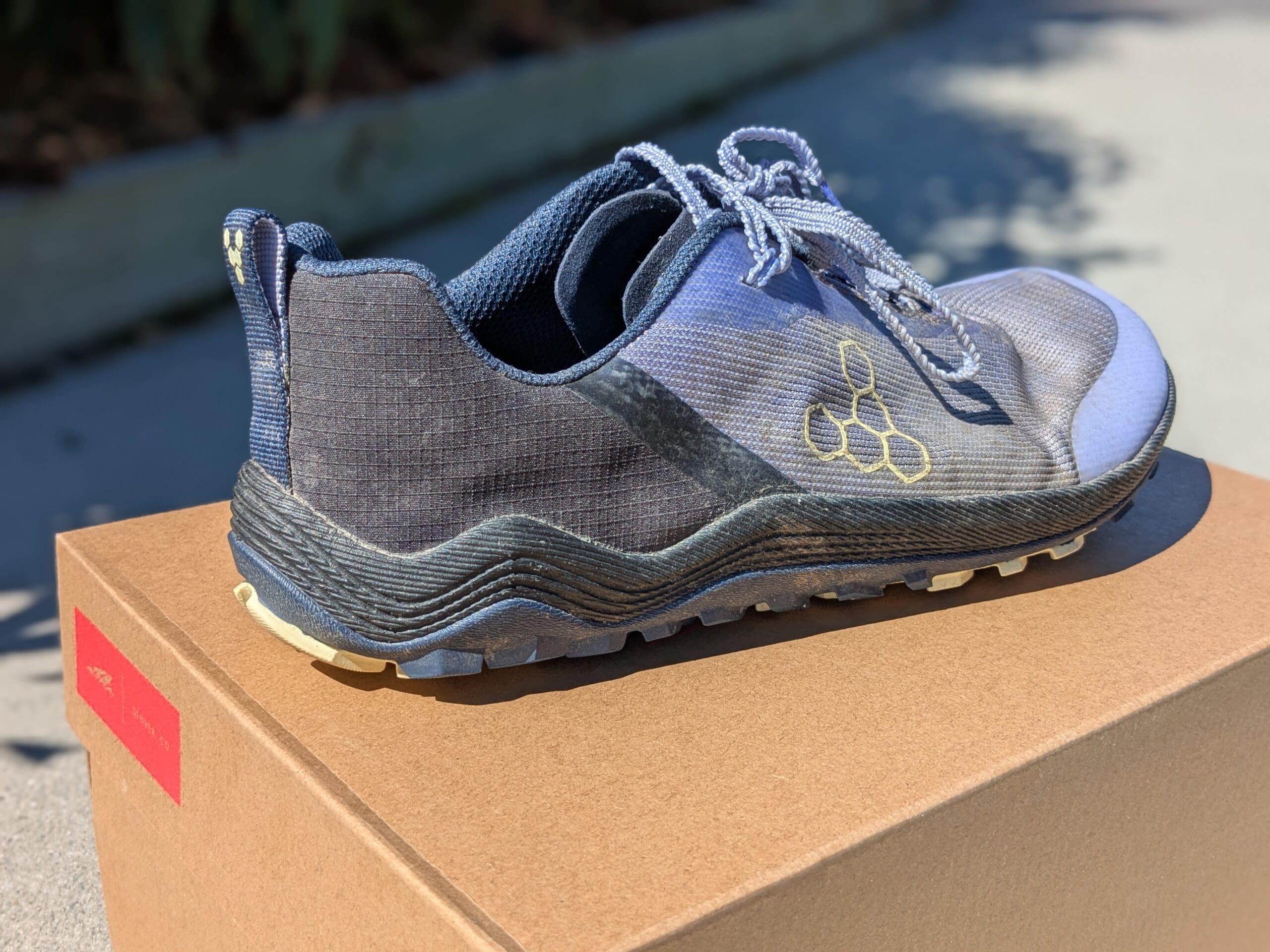
There are two main ways to avoid this:
Bridge shoes decouple these adaptations, allowing your body to adjust gradually. The zero-drop platform addresses gait pattern changes first—you learn to land with your feet underneath your body rather than out in front, you develop the timing for efficient midfoot or forefoot contact, and you strengthen your calves gradually. The moderate cushioning protects vulnerable structures like the Achilles and plantar fascia while this neuromuscular learning occurs. For detailed progression strategies, see the first step in barefoot running.
Going barefoot very slowly over time is another valid approach. Start with short, infrequent barefoot sessions (5 minutes a few times per week), then gradually increase duration and frequency over months. Your body adapts through direct exposure rather than through a transitional shoe, but you’re still respecting the gradual principle. Learn more about the second phase of transition to understand how this progression works in practice.
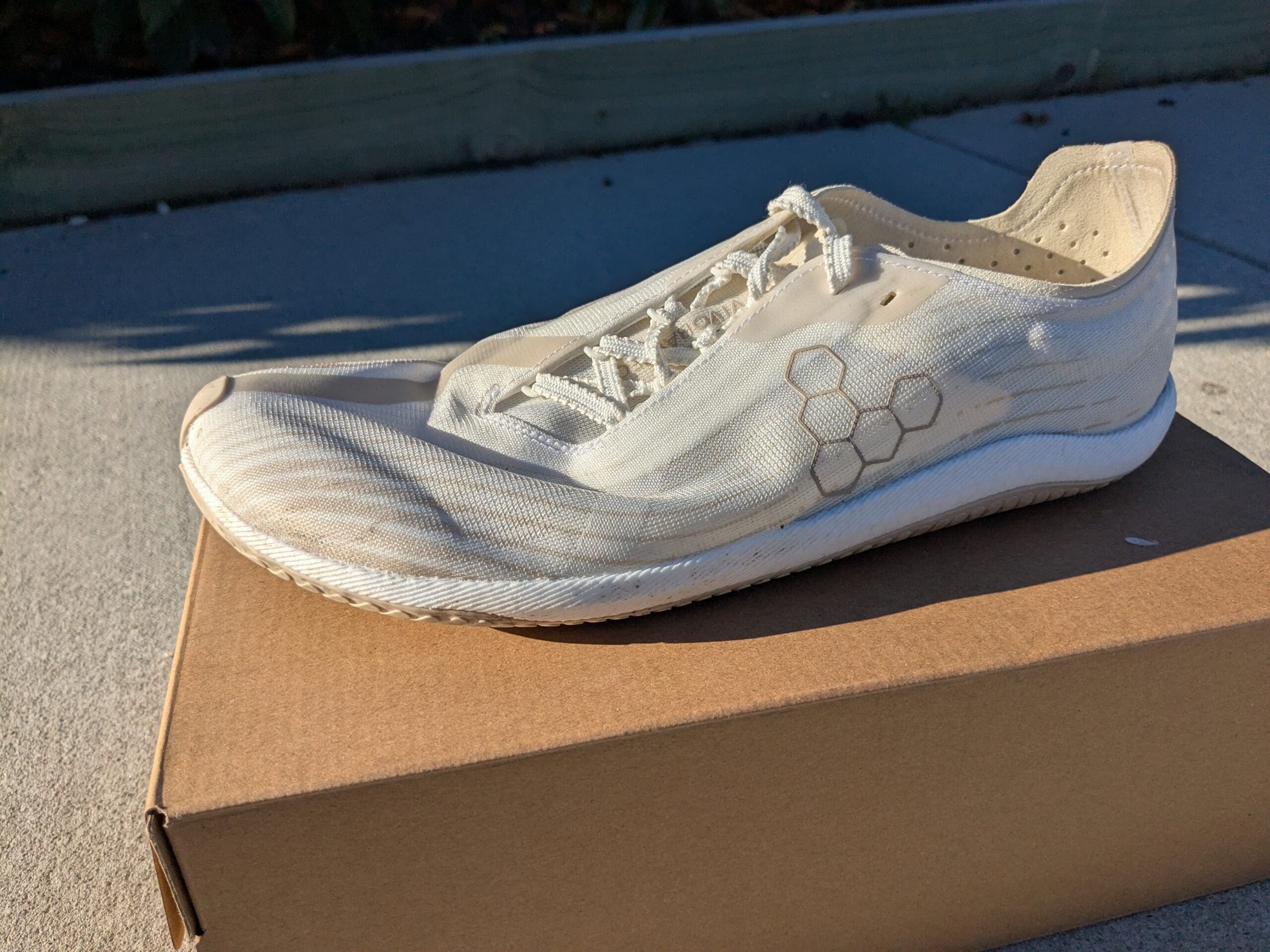
In my experience, the difference between gradual and rushed is stark. Runners who take their time—whether in bridge shoes or going barefoot slowly—maintain a comfortable training volume and enjoy the process. Runners jumping directly to barefoot shoes struggle to sustain their volume and often experience injuries that require extended rest. The gradual approach, in whatever form, preserves your running while improving how you run.
Most importantly, the gradual approach makes the transition sustainable rather than temporary. I’ve watched too many runners try barefoot shoes immediately, struggle for weeks, and return to traditional footwear convinced that minimalist running “doesn’t work for them.” The reality is that the approach was flawed, not the concept. Those same runners, when given either bridge shoes or a true barefoot progression and a proper plan, successfully transition and maintain barefoot-style running long-term.
Success with bridge shoes requires strategic implementation, not just purchasing different footwear. Here’s the progression approach that consistently delivers results:
Start with walking and easy activities before running. Wear your bridge shoes for 20-30 minutes daily during non-running activities—walking around the house, running errands, or standing at your desk. This allows your feet to adapt to zero drop and wider toe boxes without the additional stress of running impact.
Once you’re comfortable walking in them, introduce short, easy runs of 10-15 minutes twice per week. Focus entirely on landing with your feet underneath your body rather than reaching out in front. The reduced cushioning of bridge shoes makes overstriding uncomfortable, which provides excellent feedback. Continue your normal training in traditional shoes for longer or harder efforts.
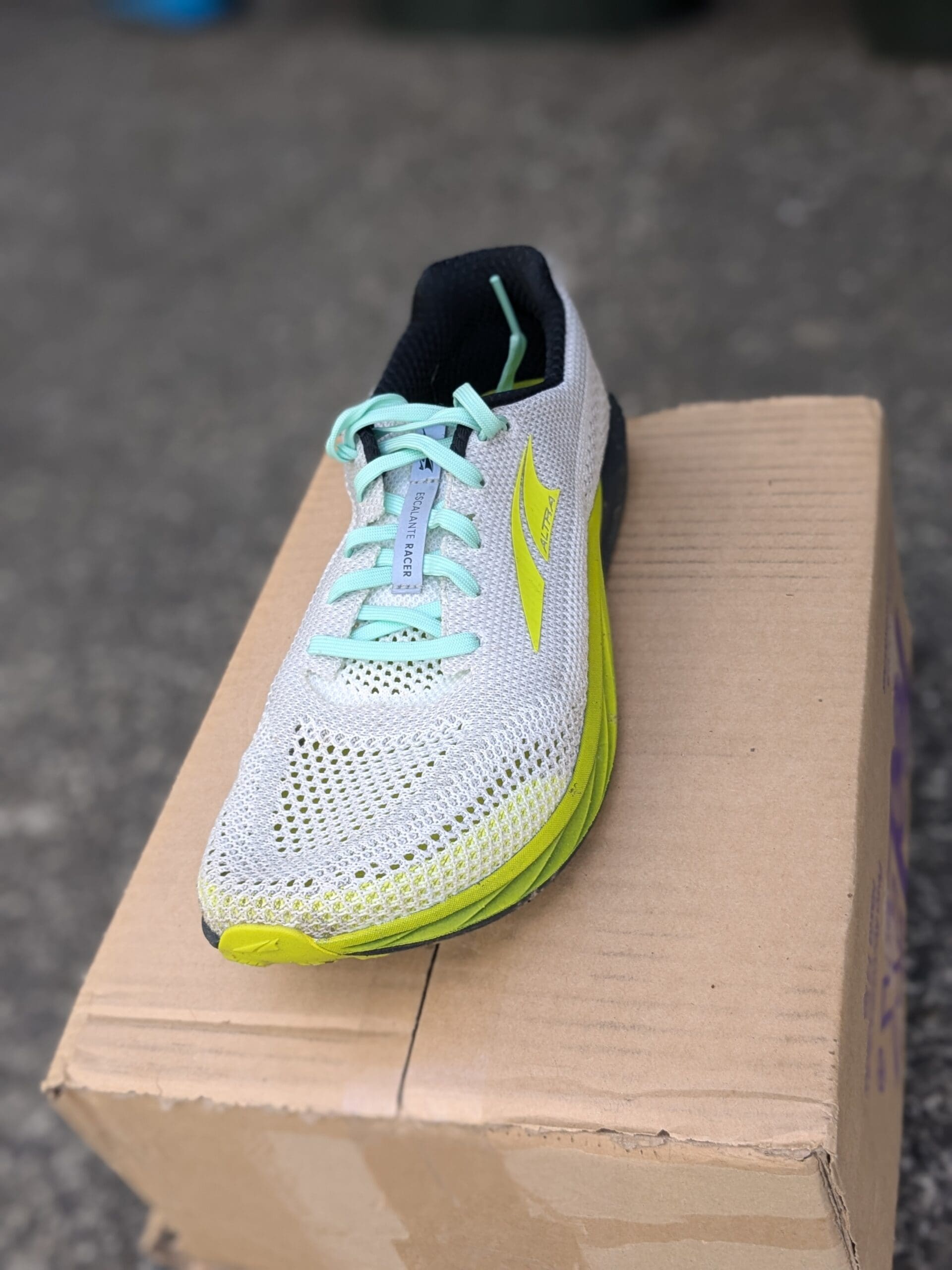
Your calves will feel worked during this initial phase. This is normal and indicates that previously dormant muscles are activating. Light calf stretching and massage help, but don’t try to eliminate all soreness—it’s part of the adaptation process.
Over the next several weeks, gradually increase bridge shoe running time by 10-15 minutes each week. Start incorporating different surfaces and gentle speed variations. Smooth pavement provides clear form feedback, while gravel paths are more forgiving. Short surges or pickups help develop the foot and calf strength needed for varied pace running.
Continue using traditional shoes for long runs and harder workouts initially. This mixed approach protects against overload while allowing steady adaptation. Most runners can transition their easy runs completely to bridge shoes during this phase while keeping quality workouts and long efforts in conventional footwear.
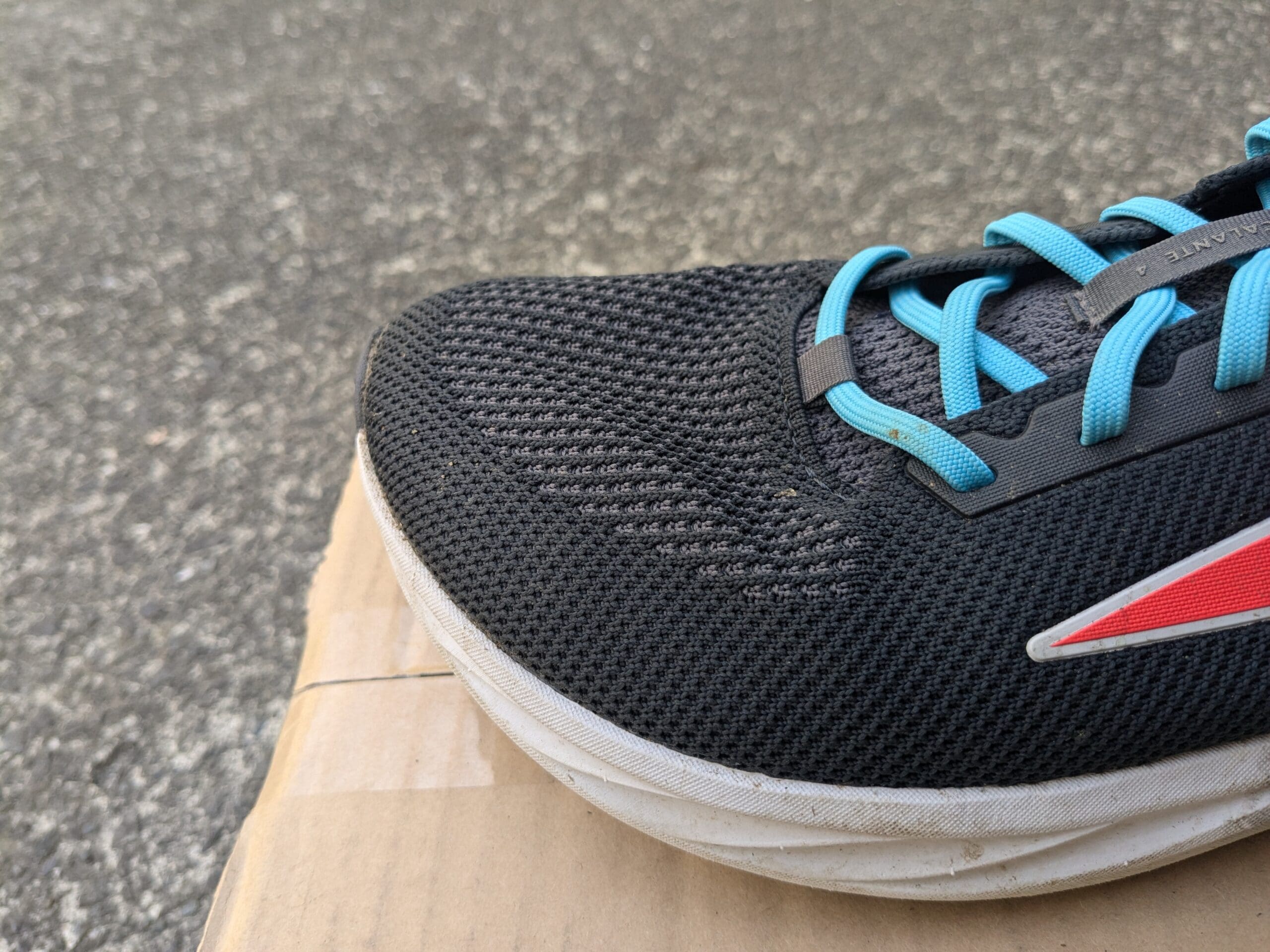
By month three, your form should feel natural and the zero-drop platform shouldn’t feel foreign. Start incorporating bridge shoes into workouts where pace matters, paying attention to how the improved ground feel enhances efficiency. Progress your long runs in bridge shoes gradually—add 2-3 miles every 2-3 weeks. Most runners can handle 12-15 mile long runs in bridge shoes by month six without excessive fatigue. Being aware of common barefoot running risks will help you recognize warning signs early.
This is when the benefits become obvious. Ground connection improves significantly, balance feels more secure, and foot strength increases noticeably. Many runners report reduced knee and hip discomfort as their gait pattern becomes more efficient.
By month 6-8, you’re ready to introduce true barefoot shoes. Start with short walks and very brief runs (5-10 minutes) in barefoot footwear, maintaining the same gradual progression you used with bridge shoes. The foundation built with bridge shoes makes this transition dramatically easier than it would have been directly from traditional shoes.
Most runners can fully transition to barefoot running within 10-12 months using this approach. Some move faster, others need more time—individual variation is significant and should be respected.
Bridge shoes aren’t a compromise—they’re a strategic tool for sustainable adaptation. The three options in this guide—Altra Escalante Racer 2, Bahe Revive Endurance, and Freet Skeeby—represent excellent footwear for transitioning toward barefoot running safely and effectively, if that’s the approach you choose.
Choose based on your current footwear and adaptation priorities. Coming from heavily cushioned shoes and nervous about the transition? Start with the Bahe Revive Endurance or Altra Escalante Racer 2. Currently in moderately cushioned trainers and ready for faster progression? The Freet Skeeby will get you there more quickly with maximum performance feel.
